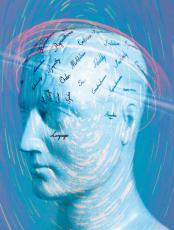[BIBLIOTECA DE GENÉTICA APLICADA - DESÓRDENES GENÉTICOS que producen MOVIMIENTOS INVOLUNTARIOS - NUEVO TÓPICO DE SALUD 2016]

Tremor Update
MedlinePlus sent this bulletin at 04/14/2016 01:10 PM EDTNew on the MedlinePlus Tremor page:

04/13/2016 02:39 PM EDT

Source: National Library of Medicine - 

04/13/2016 02:39 PM EDT

Source: National Library of Medicine - 

Tremors are unintentional trembling or shaking movements in one or more parts of your body. Most tremors occur in the hands. You can also have arm, head, face, vocal cord, trunk, and leg tremors. Tremors are most common in middle-aged and older people, but anyone can have them.
The cause of tremors is a problem in the parts of the brain that control muscles in the body or in specific parts of the body, such as the hands. They commonly occur in otherwise healthy people. They may also be caused by problems such as
- Parkinson's disease
- Dystonia
- Multiple sclerosis
- Stroke
- Traumatic brain injury
- Alcohol abuse and withdrawal
- Certain medicines
Some forms are inherited and run in families. Others have no known cause.
There is no cure for most tremors. Treatment to relieve them depends on their cause. In many cases, medicines and sometimes surgical procedures can reduce or stop tremors and improve muscle control. Tremors are not life threatening. However, they can be embarrassing and make it hard to perform daily tasks.
NIH: National Institute of Neurological Disorders and Stroke
- Essential Tremor (ET): Surgical Options (International Essential Tremor Foundation) - PDF
- Treatment of Essential Tremor (American Academy of Neurology) - PDF
- Essential Tremor (ET): Coping Tips for Everyday Living (International Essential Tremor Foundation) - PDF
- Essential Tremor vs. Parkinson's Disease: How Do They Differ? (International Essential Tremor Foundation) - PDF
- Genetics Home Reference: 48,XXYY syndrome
 (National Library of Medicine)
(National Library of Medicine) - Genetics Home Reference: essential tremor
 (National Library of Medicine)
(National Library of Medicine) - Genetics Home Reference: fragile X-associated tremor/ataxia syndrome
 (National Library of Medicine)
(National Library of Medicine)
- Deep Brain Stimulation
 (OR-Live) - Roosevelt Hospital, New York, NY, 2/21/2012
(OR-Live) - Roosevelt Hospital, New York, NY, 2/21/2012 - Essential Tremor Is More Than a Tremor
 (International Essential Tremor Foundation)
(International Essential Tremor Foundation)
- ClinicalTrials.gov: Essential Tremor
 (National Institutes of Health)
(National Institutes of Health) - ClinicalTrials.gov: Tremor
 (National Institutes of Health)
(National Institutes of Health)
- Find a Neurologist (American Academy of Neurology)
- National Institute of Neurological Disorders and Stroke
 Available in Spanish
Available in Spanish
- Children with Essential Tremor (International Essential Tremor Foundation) - PDF
- Essential tremor Available in Spanish
- Tremor Available in Spanish
- Tremor - self-care Available in Spanish
essential tremor
Essential tremor is a movement disorder that causes involuntary, rhythmic shaking (tremor), especially in the hands. It is distinguished from tremor that results from other disorders or known causes, such as Parkinson disease or head trauma. Essential tremor usually occurs alone, without other neurological signs or symptoms. However, some experts think that essential tremor can include additional features, such as mild balance problems.
Essential tremor usually occurs with movements and can occur during many different types of activities, such as eating, drinking, or writing. Essential tremor can also occur when the muscles are opposing gravity, such as when the hands are extended. It is usually not evident at rest.
In addition to the hands and arms, muscles of the trunk, face, head, and neck may also exhibit tremor in this disorder; the legs and feet are less often involved. Head tremor may appear as a "yes-yes" or "no-no" movement while the affected individual is seated or standing. In some people withessential tremor, the tremor may affect the voice (vocal tremor).
Essential tremor does not shorten the lifespan. However, it may interfere with fine motor skills such as using eating utensils, writing, shaving, or applying makeup, and in some cases these and other activities of daily living can be greatly impaired. Symptoms of essential tremor may be aggravated by emotional stress, anxiety, fatigue, hunger, caffeine, cigarette smoking, or temperature extremes.
Essential tremor may appear at any age but is most common in the elderly. Some studies have suggested that people with essential tremor have a higher than average risk of developing neurological conditions including Parkinson disease or sensory problems such as hearing loss, especially in individuals whose tremor appears after age 65.























.png)









No hay comentarios:
Publicar un comentario